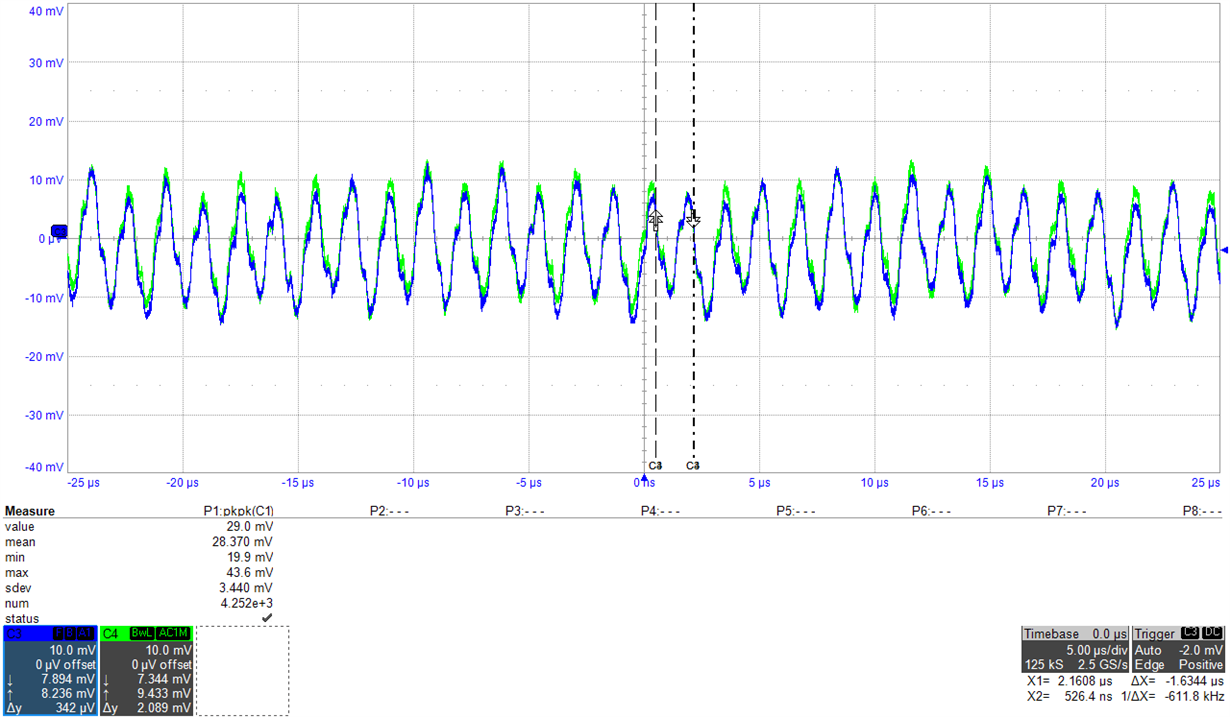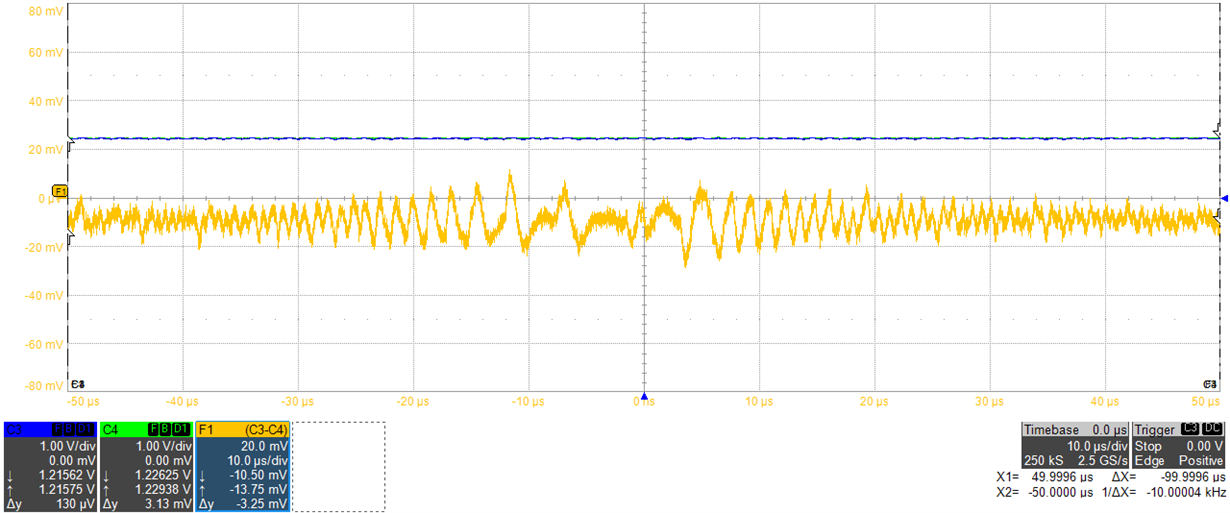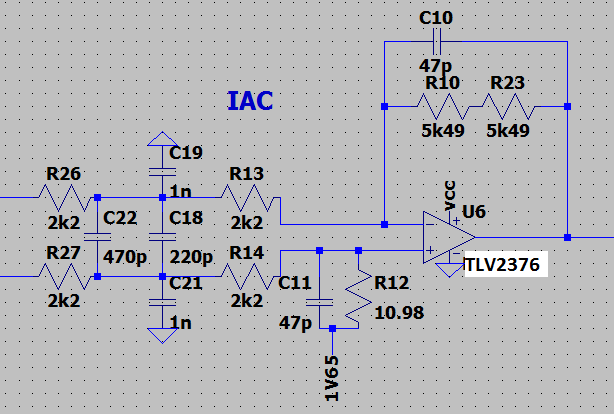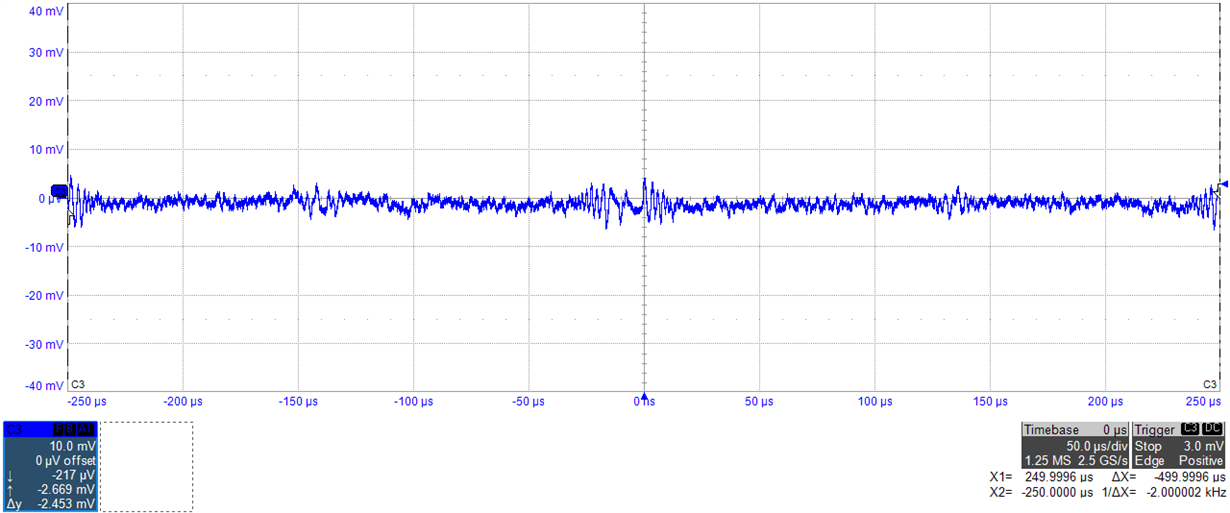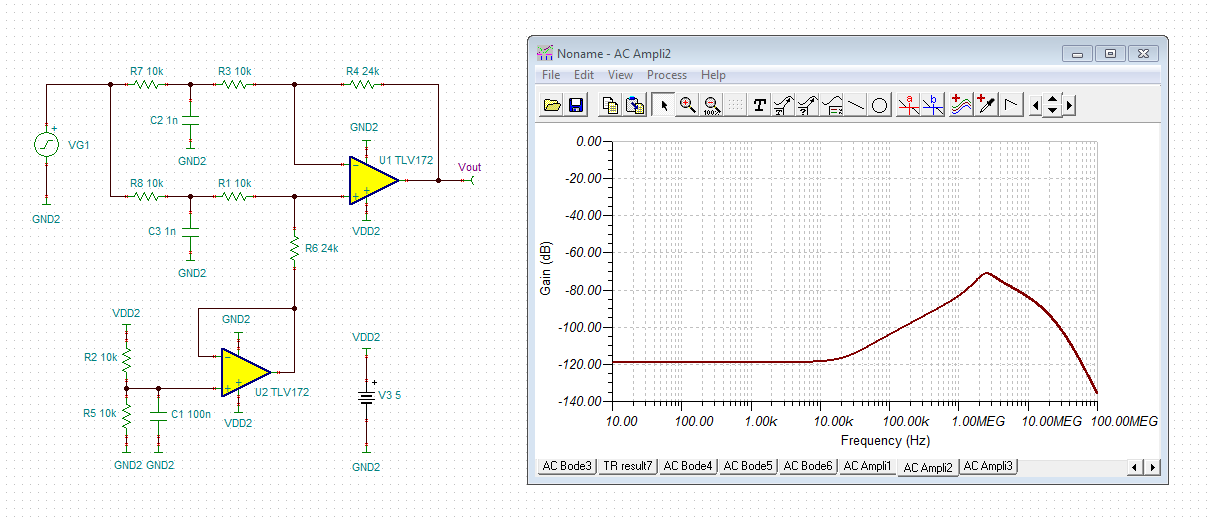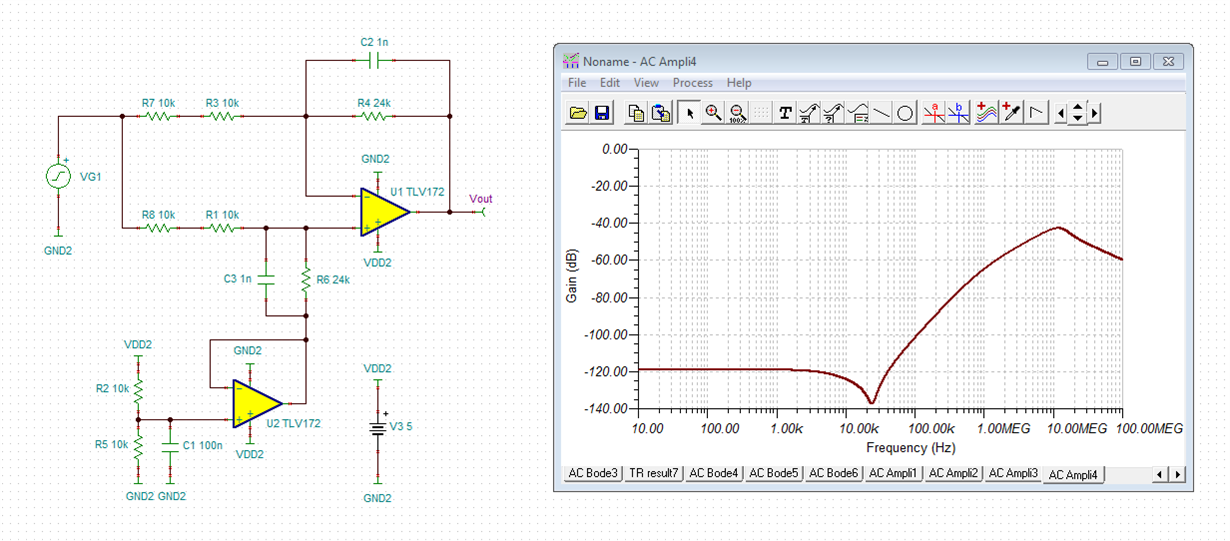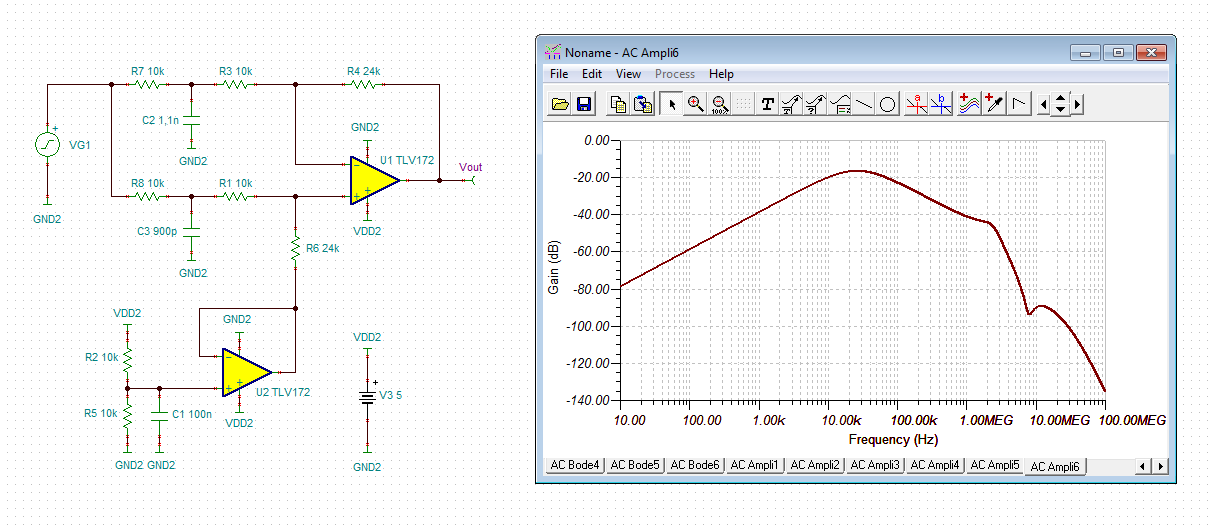Other Parts Discussed in Thread: TLV712
Hi Guys
I'm trying to use the AMC1300B to measure a 1mR shunt resistor. For the most part it's working well (good accuracy) but I am getting more noise than I expected on the output OUTP OUTN. For my tests I have isolated the circuit down to the shunt resistor (0A) and OUTP-OUTN terminated into 3k3 at the legs. I am supplying both rails at 5V with separate bench supplies.
Common mode (OUTP or OUTN to GND2) they exhibit a 20mVpp oscillation at about 600kHz (should I suppose this is the SD modulation frequency?) and in the real circuit this is rejected by the differential amplifier:
I also have up to 10mVpp of differential noise which gets as low as about 300kHz - this is getting into the original circuit's opamp output. The waveform below is measuring the differential output using the scope subtraction. Is this the expected behaviour of this IC or have I done something wrong? It's certainly well above any noise specs in the datasheet but they stop at 100kHz/200kHz. Should I be applying more low pass filter?
Thanks
Stewart


